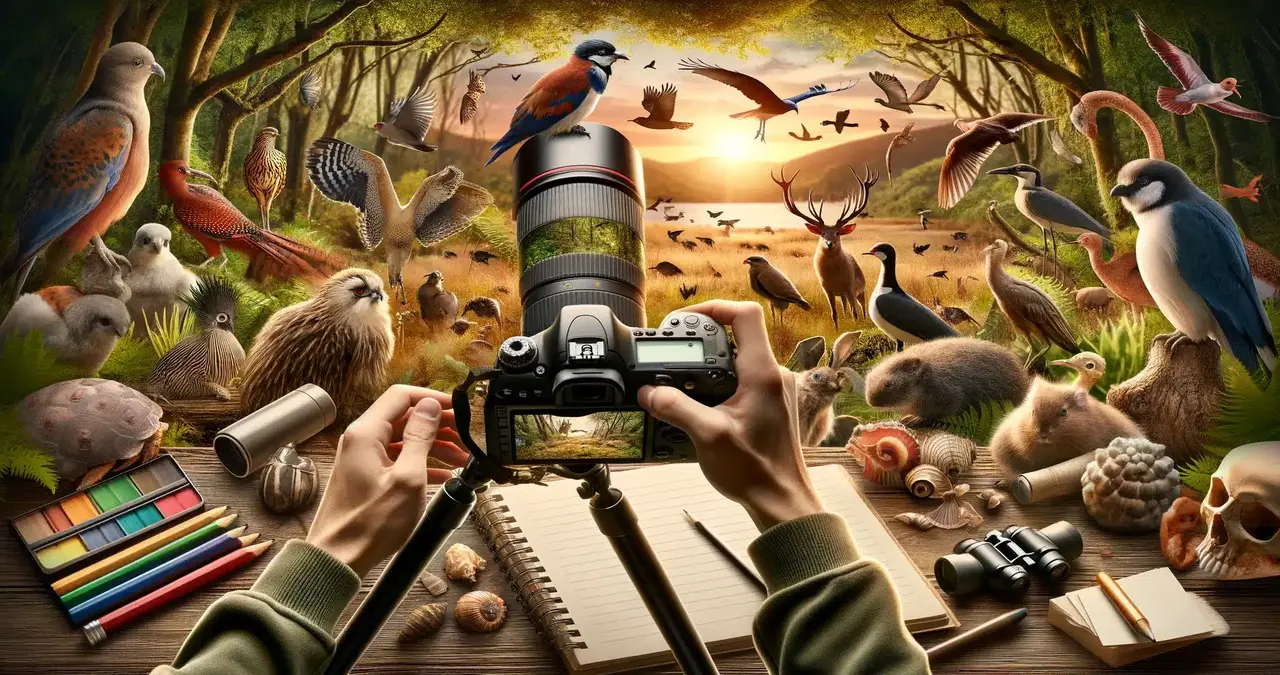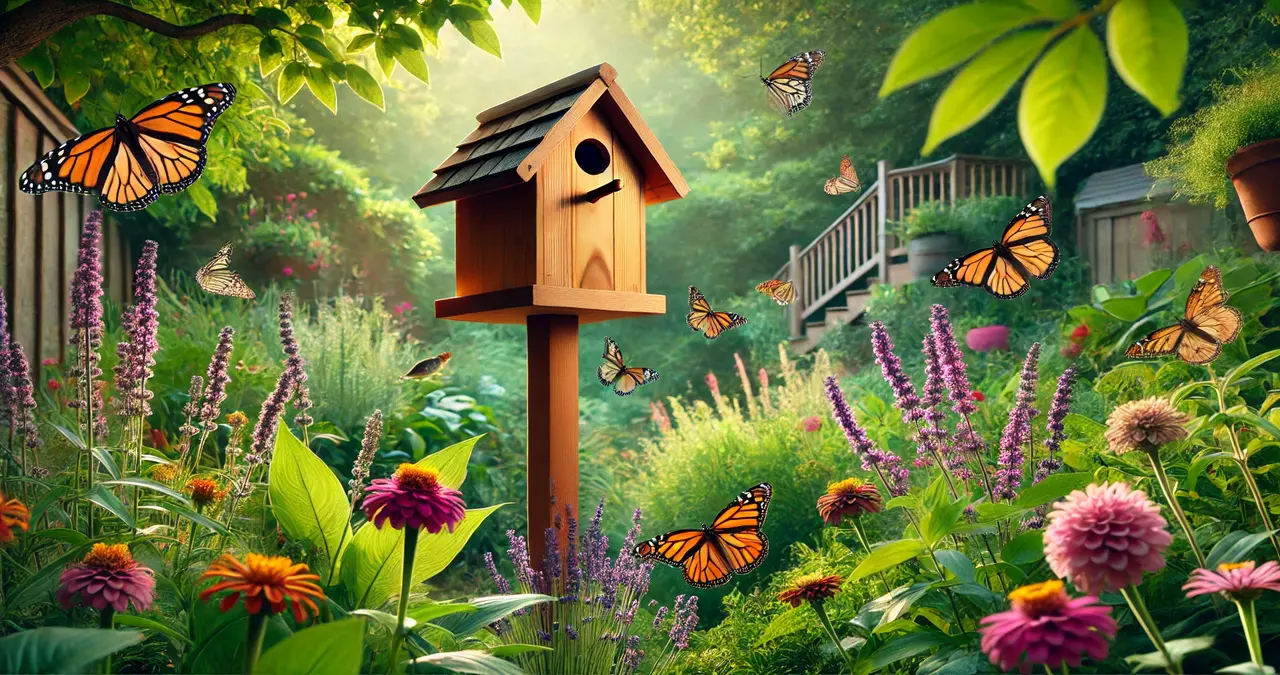Table of Contents
ToggleCreating a haven for wildlife in your backyard not only brings a sense of tranquility and beauty to your outdoor space but also plays a crucial role in conserving local flora and fauna. This comprehensive guide will walk you through two enchanting projects perfect for wildlife lovers: building birdhouses and establishing butterfly gardens. Both endeavors are not only rewarding but are also significant contributions to preserving biodiversity in urban settings.
- The Importance of Wildlife-Friendly Spaces
Creating wildlife-friendly environments is more critical than ever in the face of urban expansion. These projects provide essential sanctuaries for various species and help maintain local ecosystems’ health. Birdhouses can support bird populations by offering safe places for nesting, particularly in areas where natural nesting sites are scarce. Similarly, butterfly gardens provide a habitat for these beautiful insects and support pollination, vital for plant reproduction.
- Planning Your Outdoor Wildlife Projects
Proper planning is essential before constructing birdhouses or planting a butterfly garden. Consider the following:
- Location: Choose a place that is safe from predators and harsh weather. Elevated spots away from high-traffic areas are ideal for birdhouses. Butterfly gardens will thrive in sunny locations protected from strong winds.
- Materials: Use natural, non-toxic materials. Untreated wood is best for birdhouses, and native plants are ideal for butterfly gardens, requiring less water and maintenance.
- Design: Tailor the design to attract specific species. Different bird species prefer other houses, and butterflies are attracted to particular plants.
- Building Birdhouses
Building a birdhouse is a delightful project that can be completed in a weekend. Here’s how to do it step by step:
Step 1: Choose the Right Design

Select Wildlife a design that caters to the bird species you wish to attract. For example, bluebirds require houses with 1.5-inch entrance holes placed 4-6 feet above the ground.
Step 2: Gather Materials
You will need:
- Untreated wood (e.g., cedar, pine)
- Screws or nails
- Drill
- Saw
- Sandpaper
- Waterproof, non-toxic paint (optional)
Step 3: Construction
- Cut the wood according to your chosen design.
- Drill the entrance hole, ensuring it is the correct diameter.
- Assemble the pieces using screws or nails, ensuring there are no sharp edges.
- Sand any rough surfaces to protect the birds.
- Add a few small holes in the bottom for drainage and one or two near the top for ventilation.
Step 4: Installation
- Mount the birdhouse on a pole or against a tree at the recommended height.
- Ensure it is stable and secure to withstand weather and predators.
- Creating a Butterfly Garden
Butterfly gardens are a magnet for butterflies and a vibrant centerpiece for your garden.
Step 1: Select Suitable Plants
Choose native flowering plants that provide nectar throughout the seasons. Some good choices include:
- Milkweed
- Lavender
- Zinnias
- Butterfly bush
Step 2: Design Your Garden
- Plan for continuous blooms to provide a constant food source.
- Include plants that caterpillars like to eat to encourage butterflies to reproduce in your garden.
- Arrange taller plants at the back and shorter plants at the front to create a tiered effect.
Step 3: Prepare the Site
- Clear the area of weeds and debris.
- Amend the soil with compost to ensure it is fertile and well-draining.
Step 4: Planting
- Plant your chosen flora at the recommended spacing to ensure they have room to grow.
- Water the plants regularly, especially during dry spells.
Step 5: Maintenance
- Avoid using pesticides, which can harm butterflies and other beneficial insects.
- Deadhead flowers to encourage more blooms.
- Add a shallow water source for butterflies to drink from.
- Enjoying and Maintaining Your Wildlife Projects
Once your birdhouses and butterfly gardens are set up, it’s time to enjoy and maintain them. Regular checks will help ensure they remain safe and welcoming for wildlife. Cleaning birdhouses between nesting seasons and refreshing mulch and plants in your butterfly garden annually will keep your backyard oasis thriving.
Conclusion
Embarking on outdoor projects such as building birdhouses and creating butterfly gardens enhances your garden’s aesthetic appeal and significantly contributes to local wildlife conservation. By taking on these projects, you become an active participant in protecting and nurturing the biodiversity of your local environment, ensuring that future generations will also enjoy the flutter of wings and birds chirping in their backyards.
This venture deepens your connection with nature and offers profound lessons in responsibility and the interconnectedness of ecosystems, making it a fulfilling pursuit for any wildlife enthusiast.
FAQS
Here are five frequently asked questions (FAQs) related to building birdhouses and creating butterfly gardens:
- What is the best time of year to start building birdhouses or planting a butterfly garden?
Answer: The best time to build birdhouses is late winter or early spring before the breeding season starts. Early spring is ideal for planting butterfly gardens so that the time butterflies establish the plants are active in warmer months.
- How often should birdhouses be cleaned, and why is it important?
Answer: Birdhouses should be cleaned at least once a year after the breeding season to prevent the buildup of parasites and diseases. Cleaning them ensures they are safe for new occupants the following season.
- What are the most common mistakes to avoid when setting up a butterfly garden?
Answer: Common mistakes include using pesticide-treated plants, not providing a variety of plants that bloom at different times, and not considering the light and soil requirements of the chosen plants, which can lead to poor plant health and fewer butterflies.
- Can I place birdhouses close to my home or in busy areas?
Answer: It’s best to place birdhouses in quieter areas of your garden, as birds often avoid high-traffic spots due to the risk of predators and disturbances. If placed near your home, ensure it is a secluded part not frequently used by humans and pets.
- How can I attract a specific type of butterfly to my garden?
Answer: To attract specific butterflies, research which plants are preferred by the larvae and adults of that species. Planting a range of host plants for the larvae and nectar sources for the adults can encourage specific butterflies to visit and breed in your garden.















